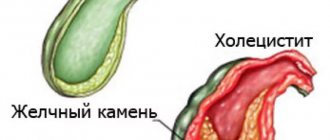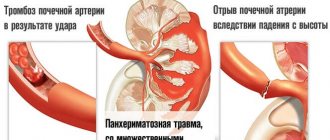Rhinolalia is a speech disorder manifested by severe distortion of speech and incorrect pronunciation of individual sounds. As a rule, the development of this speech pathology is caused by an abnormal structure of the speech apparatus. The speech of a child with rhinolalia has a specific sound: since this pathology involves a violation of the resonator function of the nose, air flows incorrectly, which provokes deformation of sounds.
In addition to sound distortions, rhinolalia can cause difficulties in the lexical and grammatical development of a child’s speech. To exclude the development of psychological problems, specialized work with a child with rhinolalia is necessary.
Symptoms of rhinolalia
With organic rhinolalia, the diagnosis is made in infancy. From the first days such children have problems with nutrition and breathing and are susceptible to respiratory diseases.
The formation of speech in children with rhinolalia is difficult and occurs after 2 years. A sick child pronounces sounds, syllables and words late. They are unclear and difficult to understand.
In the open form, the sounds have a nasal timbre and are indistinguishable from each other. Closed rhinolalia manifests itself in a violation of the pronunciation of nasal sounds and their replacement with others. The timbre of the voice also suffers.
The disease also causes other disorders - dysgraphia and dyslexia, as well as persistent psychological discomfort. That’s why diagnosing rhinolalia and treating it is so important.
Diagnosis of rhinolalia
The examination of children and adults with rhinolalia is multifaceted and is carried out by various specialists:
- otolaryngologist;
- speech pathologist;
- speech therapist;
- neurologist;
- orthodontist;
- phoniatrist;
- pediatrician
An examination by specialized specialists allows us to identify the etiology of the disease, characterize as accurately as possible the nature of pathological changes and the severity of all symptoms. The following instrumental diagnostic methods are important:
- X-ray of the nasopharynx;
- rhinoscopy;
- electromyography;
- pharyngoscopy, etc.
These techniques make it possible to visualize the nature of pathological changes and their severity in each individual patient.
Of course, the most significant is an examination by a speech therapist, who, using a number of progressive techniques, will be able to assess the following parameters:
- structure of the articulatory apparatus;
- his mobility;
- voice disorders;
- parameters of physiological and phonation breathing, etc.
To diagnose open rhinolalia, the Gutzmann technique is used, which is based on the fact that the patient pronounces the sounds “a” and “i” alternately, while the doctor opens and closes the nasal passages. In the presence of pathological changes, the vibration of the wings of the nose is very clearly felt, and when the nasal passages are pinched, the sounds are significantly muffled. Thus, it is possible to diagnose the open form of rhinolalia.
Correction of rhinolalia at a speech therapy center in Moscow
Corrective work with children with rhinolalia should begin when a problem is detected in order to achieve positive results by adolescence. Depending on the form, speech therapy work can be the main or complementary work of other specialists.
The role of a speech therapist for rhinolalia is to consolidate sound pronunciation skills. Massage is used, the development of velopharyngeal closure, the development of exhalation and sound pronunciation, the elimination of nasality, the development of vocabulary and work on lexical literacy.
- Correction for functional rhinolalia. A positive effect can be achieved through sessions with a speech therapist. They include massage, breathing exercises, work on developing the correct pronunciation of sounds and auditory attention.
- Correction for organic form. The effectiveness depends on the surgical intervention, the timeliness of the operation and the completeness of the speech therapist’s work with the child.
Types of cleft palate
Rhinolalia is often a consequence of clefts in the oral cavity, which can be congenital or acquired. Among congenital clefts there are clefts of the face, lip, nose, hard and soft palate. The degree of paresis varies from facial asymmetry to complex combined distortions of parts of the face and complete asymmetry in the eye. Clefts can be unilateral or bilateral. Unilateral are more often observed on the left (70%), more often in men than in women. 69% of men have a cleft lip in combination with a cleft palate, but of the remaining 31%, women are twice as likely to have an isolated cleft palate.
The following types of clefts have been recorded in medicine:
isolated cleft lip (“cleft lip”);
- combination of cleft lip and alveolar process;
- lips, alveolar process and hard palate;
- lips, alveolar process of the hard and soft palate (“cleft palate”);
- damage to the alveolar process and hard palate;
- paresis of the hard and soft palate;
- defect of the soft palate;
- cleft of the small tongue.
Cleft palates are often combined with clefts in the nasal septum, resulting in deformation in the patient - a double nose, a proboscis instead of a nose. The nasal passages may even become clogged.
Acquired clefts occur as a result of tumors, injuries, wounds, and frequent operations. More often they occur in people working in mines, logging sites, and participating in military operations involving explosions.
Ermakova Violetta Valentinovna.
Novosibirsk, MUZ NSO Children's City Clinical Hospital SMP, speech therapist, [email protected]
Annotation. The article provides brief characteristics of voice impairment due to rhinolalia. An overview of phonopedic techniques used in the correction of rhinolalia by various authors is offered.
Key words: rhinolalia, phonopedia, resonance, resonance, orthophonic method.
In recent years, the scope of phonopedia has expanded significantly. The need has clearly emerged not only to eliminate voice disorders themselves, but also voice disorders that are part of the structure of a speech defect in rhinolalia, dysarthria, and stuttering.
Voice disturbances in rhinolalia can be both organic and functional. With congenital cleft palate, the voice is significantly impaired: its timbre is nasalized, strength is reduced, and hoarseness is pronounced. The imbalance of oral and nasal resonance is due to an organic cause - cleft palate; all other signs of a voice defect are functional and develop gradually. I.I. Ermakova indicates three causes of functional insufficiency of the vocal apparatus in adolescents and adults with cleft palates:
- functional changes in the muscles of the palate and pharynx, which are normally reflex stimuli of the vocal folds;
formation of articulation of some voiced consonants in a lyringeal way;
- characterological characteristics of people with clefts.
According to research by I.I. Ermakova [4, p. 8] 70–80% of people with congenital cleft palate have functional disorders in the form of hypotonicity of the vocal folds and phonasthenia. The sound of the voice and the phonation mechanism in cleft palate are so specific that M. Zeeman [5, p. 100–112] identified the voice in rhinolalia as an independent disorder and called it palatophonia. And modern phoniatrics generally classifies rhinolalia as a voice disorder.
Speech therapy work on the correction of rhinolalia begins in childhood and in the early stages is nothing more than specially selected phonopedic exercises. Measures that help improve the voice of children before plastic surgery of the palate include the establishment of physiological and phonation breathing, the prevention of dystrophy of the muscles of the pharynx and palate. After the operation, work on the voice includes breathing exercises that lengthen exhalation, activate the mobility of the diaphragm, strengthen the velopharyngeal closure, establish a balanced resonance, develop correct voice guidance, expand the range of the voice, increase its strength, in addition, compensation for disorders of the motor function of the larynx. Such work is subject to general didactic principles: consistency, systematicity, activity, motivation, and it is also necessary to take into account the individual and age characteristics of the child.
In phonopedic work when correcting rhinolalia, there are three stages: preparatory; formation of a new mechanism of voice formation; consolidation and automation of speech stereotypes.
The first stage is the weakening of pathological connections, preparing the respiratory and vocal apparatus for subsequent vocal exercises. At this stage, it is advisable to use breathing exercises to differentiate nasal and oral exhalation, physiomechanotherapeutic effects on the muscles of the soft palate, the posterior wall of the pharynx, massage of the soft palate, as well as psychotherapy.
The second stage is the formation of speech breathing skills, a new stereotype of voice formation. At the second stage, special attention is paid to specific techniques aimed at activating the movements of the soft palate in case of violations of nasal resonance. Work on resonance plays a huge role in the correction of rhinolalia and includes several components:
adjustment of the resonator-articulation system using auditory and vibration sensations;
strengthening the resonator-articulation system;
- improvement of the sound resonance system.
The next direction of work at the second stage of phonopedic correction is expanding the sound range:
- development of voice power;
- development of voice pitch;
- development of voice timbre;
- improving the intonation side of speech.
The third stage is consolidation of acquired skills.
Children with rhinolalia usually have insufficient thoracic resonance activity. In this case, voice exercises are recommended with the pronunciation of vowel sounds a, e, o, and, y with a focus on the degree of lifting and tension of the palatal curtain, which are enhanced by artificially induced vibration (for example, tapping on the chest). According to the method of I.I. Ermakova’s child repeats vowels after the speech therapist. The speech therapist pronounces vowels loudly, but not tensely, with a soft attack, with an open sound. The number of vowels in combination gradually increases to three sounds. The pronunciation of vowels is carried out in order of orientation to the degree of elevation of the velum palatine.
Increasing the strength of the voice and expanding its range is most easily achieved through vocal exercises. Starting with chanting thirds or triads. Then they begin to sing short musical phrases and songs. The use of vocal exercises in correctional work with children with velopharyngeal insufficiency is based on the phylogenetic and functional connection of the soft palate and larynx. When singing, the muscle tone of the palate increases sharply with an increase in muscle tone in the larynx and pharynx. The soft palate reflexively rises and adjoins the back of the pharynx. To expand the range, increase the strength of the voice, and develop intonation, the exercises are modified: they change the key, sing either quietly or loudly.
Children with rhinolalia completely lack experience in many primitive actions: blowing, breaking the bows, feeling increased pressure inside the mouth, etc., which significantly reduces the formation of self-control skills. In this regard, the V.V. system is unique. Emelyanov [3, p. 37–39]. The exercises are structured according to the principle from simple to complex and are based on the fact that activation of the vocal function leads to the formation of new feedback channels, unconscious for the child himself, with the help of which work on correcting sound pronunciation will be effective.
After vocal exercises, the basic, most natural tone of the child’s voice is determined. The determination of the most convenient tone occurs when the child repeats after the speech therapist the imitation of the sound “m” at different heights, with attention focused on nasal resonance and a soft vocal attack. The speech therapist’s task is to let the child feel and remember this tone, which will become a reference tone for him. The choice of the “m” phoneme as the initial one when producing a voice is determined by its physiological basis, convenient for correct phonation. When pronouncing “m” with closed lips, lowered tongue root, a small gap between the teeth, the sound can be easily delivered “into the mask”. Initially, the phoneme is pronounced briefly, but then the sound is lengthened.
Once children begin to sense kinesthetically and can differentiate correct phonation by ear, they can begin subsequent exercises.
It is very important that correction of sound pronunciation in children with rhinolalia will be successful only if it is preceded by phonopedic correction.
The most effective method of rehabilitation of children with rhinolalia is the orthophonic method proposed by E.S. Almazova [1, p. 182], an integral part of which is phoniatric influence. The main goal of the orthophonic method is to restore the functional relationship between breathing, articulation and voice formation, obtain a loud, ringing, “flying” sound of the voice and consolidate it in the child’s independent speech.
Bibliography:
- Almazova E.S. Speech therapy work on voice restoration in children. – M.: Iris-press, 2005. – 182 p.
- Wilson D.K. Voice disorders in children [Text] / D.K. Wilson. – M.: Medicine, 1990. – 448 p.
- Emelyanov V.V. On the uneven development of the vocal apparatus and vocal function. – St. Petersburg: LOIRO, 1998. – 37–39 p.
- Ermakova I.I. Correction of speech and voice in children and adolescents. – M.: Education, 1996. – 143 p.
- Zeeman M. Speech disorders in childhood. – M.: Medicine, 1962. – 300 p.
- Lavrova E.V. Speech therapy. Basics of phonopedia. – M.: Medicine, 2007.
- Soboleva E.A. Rhinolalia. – M.: Astrel, 2006. – 126 p.
Where to treat rhinolalia to be sure of the result
The NeuroSpectrum Center for Pediatric Speech Neurology and Rehabilitation is a modern medical center that treats patients with impaired or absent speech, mental development disorders, developmental delays, and so on. Patients diagnosed with Rhinolalia
This is also not uncommon here, and the center knows exactly how to make a correct diagnosis and what treatment will be most effective.
The specialists of our Center have extensive experience working with patients with rhinolalia; they have modern diagnostic and medical equipment at their disposal, so we are ready to solve problems of any level of complexity. However, it must be remembered that at an earlier stage of rhinolalia, treatment will be less expensive and more effective, so you should not delay contacting specialists.
Replacing sounds
Another clear difference between rhinolalia and dyslalia is that in the first case, although consonants are primarily affected, vowel sounds are also distorted. The replacement occurs mainly from the phonemic side of speech, and not from the phonetic side. For example, instead of the sound “z” you get a similar “s”.
With dyslalia, the pronunciation of consonants worsens. Phonetic defects are observed. For example, a burry “r”, disturbances in sonority, softness, and possible sigmatism (lisp).
These are the main, but not all, signs that can be used to distinguish a particular disease.
MANIFESTATION
The degree of manifestation depends on the severity of the disease. There are 4 degrees. At the first level, the timbre of the voice changes, and the intelligibility of speech is slightly impaired. The next degree is characterized by a large number of violations, individual sounds are replaced, and the intelligibility of what is spoken is lost. The third degree demonstrates an increase in symptoms, but speech remains understandable, although it has a number of distortions. The fourth degree is characterized by severe distortion of speech, phrases become incomprehensible to others.
Comprehensive correction of rhinolalia
If surgical intervention is necessary, it should be performed; for milder cases, a number of measures are provided to restore the correct pronunciation of sounds.
There is a specially designed massage of the soft palate, which is in a flaccid state at the time of rhinolalia.
- The massage is carried out with a clean finger, preferably treated with an antiseptic or alcohol.
- Stroking is performed at the border of the soft and hard palate.
- When the child gets used to it, you should ask him to pronounce the sound [a] in a drawn-out manner, while continuing to massage the palate.
- After stroking, you can add a zig-zag movement.
- Soft pressure is applied pointwise and several times with light pushes.
If the child is old enough, you can sit him in front of a mirror and ask him to do this massage on his own; over time, he should be able to massage it without the help of his hands, but only with the help of the tip of his tongue.
It is important to remember that the main thing is the adult’s interest and support. This path is quite long and labor-intensive; you need to let the child understand that you are on his side and will help if necessary.
It is also worth considering that a gag reflex is possible. Therefore, it is recommended to do massage some time after eating.
In addition to massage, there are a number of exercises that you need to do with your child:
- Drink a glass of warm water slowly and in small sips.
- Gargle with warm water, long and slowly.
- Open your mouth wide to imitate a cough.
- Invite your child to attack a piece of paper with his voice, using the sounds: [a], [u], [o], [e], [i], [s].
The primary causes may also be hidden in the nasal cavity. Therefore, you need to add secondary tasks to the exercises to restore breathing.
Such exercises should be started after adenoids and polyps have been removed or surgery has been performed to correct a deviated nasal septum. Only after all the manipulations should you begin to restore proper breathing.
It is difficult for children to concentrate on daily training; adults will have to work hard to carry out recovery in a playful way.
Some exercises that will help to interest your child in a playful way:
Snowstorm.
Balls of cotton wool are tied to the fingers, forming snowflakes; the child is invited to blow on them so that they spin in a blizzard dance;
Ball game.
The tongue, like all children, loves to play with a ball; first you need to inflate it (take a deep breath and puff out your cheeks), and then kick it well (first deflate your cheeks, and then exhale through your mouth).
After playing with the ball, it must be inflated (with the sound “s-s-s”, the child blows air through almost clenched teeth, the lips should be stretched in a smile, and the tip of the tongue rests on the teeth);
Flute.
Playing musical instruments is very exciting; the child is encouraged to play the pipe (roll his tongue into a tube and blow into it).
Music can be heard on the fingertips when the child brings his palm to his mouth.
One option is to have a party every day and inflate balloons.
It is also important to carry out articulation exercises, which are designed to invigorate the tip of the tongue and make it mobile. These exercises will also be useful for the development of lips and cheeks; you need to completely restore the speech apparatus.
A few simple exercises for your child:
Boa.
Imagine that the tongue is a snake and it slowly descends from the mouth; if possible, the tongue curls into a tube.
And now it is no longer the tongue of the boa constrictor, but the child himself has turned into a boa constrictor and sticks out his tongue, making oscillatory movements in the air.
Cuckoo.
The cuckoo has turned from a clock into a tongue, and now it needs to make circular movements with its tongue, its mouth is wide open, its tongue touches its lips, moving slowly, like the hands of a clock.
Swing.
The tongue also wants to ride on the swing. Up to the nose, down to the chin.
Doctor.
The child gives injections to the sore cheeks with his tongue. The tongue presses from the inside one by one on the cheeks.
The main thing with rhinolalia is to support the child and help him cope with the disease; he relies on your help.
The course of treatment can drag on for a long time, you should not give up, and it is also advisable to involve a speech therapist to help ensure that tasks are completed correctly.
Sometimes you have to wait months and even years for results. You should not forget about this and move towards the goal together with your child!
Related posts:
- What do we know about rhinolalia? Rhinolalia in children is diagnosed quite simply. Also her methods...
- What is "War and Peace" about? Summary of the novel “War and Peace” by chapters. All answers...
- What exercises are useful for rhinolalic patients? Corrective exercises for rhinolalia - articulation exercises, breathing and others...
- Rhoticism in speech - complete information Rhotacism (problem with the sound [P]) is the most common disorder in children...
How to identify rhinolalia - symptoms
Rhinolalia of the open type, if it is congenital, is noticeable from birth. Physical impairment is noticeable externally. In addition, these children have impaired breathing and eating processes. Due to the fact that the inhaled air does not encounter any obstacles on its way, it does not heat up and the child becomes susceptible to frequent diseases such as bronchitis, pneumonia, otitis media, etc.
Some of the most significant symptoms include:
- Absence of babbling at an early age.
- Speech development delay.
- Slurring of spoken words and sounds.
- Small vocabulary. Mouth breathing.
- Neurological abnormalities - drooping of the upper eyelid, eye nystagmus, increased reflexes.
- Mental disorders - irritability, isolation, mood instability.
To diagnose rhinolalia, you need to contact several specialists, because only comprehensive measures will help bring speech back to normal. An orthodontist, otolaryngologist, facial surgeon, or dental surgeon will be able to correct the physiological disorder. However, subsequently, hard work by defectologists and speech therapists, neurologists and neuropsychologists is necessary in order to correct deviations in the child’s speech and mental development.
Causes
The causes of rhinolalia can be congenital or acquired. Congenital causes of rhinolalia apply to children who have:
- clefts (non-fusion) of the soft and hard palate (“cleft lip”, “cleft palate” and others);
- short soft palate;
- muscle formation above the root of the tongue;
- paralysis or paresis (weakening) of the soft palate, manifested in the difficulty of raising and closing the palate with the back wall of the pharynx;
- flaccidity of articulatory muscles, which occurs in frequently ill children.
Clefts can be through, which involve not only the palate, but also the upper lip. They are one-sided and two-sided. Non-full nonunions are complete, which means they reach the incisor area without affecting the lips. Incomplete clefts are characterized by the fact that non-union occurs in a small area, for example, only in the area of the soft palate.
The acquired form of rhinolalia occurs with mechanical damage to the same areas and the face. In addition, the disease can develop due to tumor growths of the vagus and glossopharyngeal nerves.
For example, a functional open one appears in a person after surgery - removal of adenoids, various tumors and curvatures in the nasopharynx, with curvature of the nasal septum and the formation of polyps in the nasal cavity. In this case, the air practically does not enter the nose or enters there in insufficient quantities.
Closed rhinolalia can occur with adenoids, increased function of the muscles of the soft palate, which leads to isolation of the nasal and oral cavities from each other.
Acquired rhinolalia in a child can appear when a woman in the early stages of pregnancy suffered from viral diseases (influenza, rubella, mumps, dysentery, toxoplasmosis), had endocrine disorders, took certain medications, alcohol and smoked during pregnancy. Some researchers note the hereditary nature of such anomalies (my grandparents had clefts).







